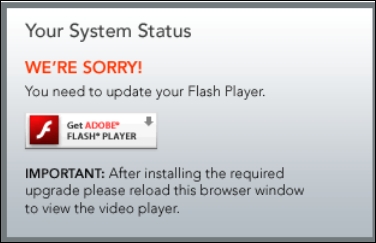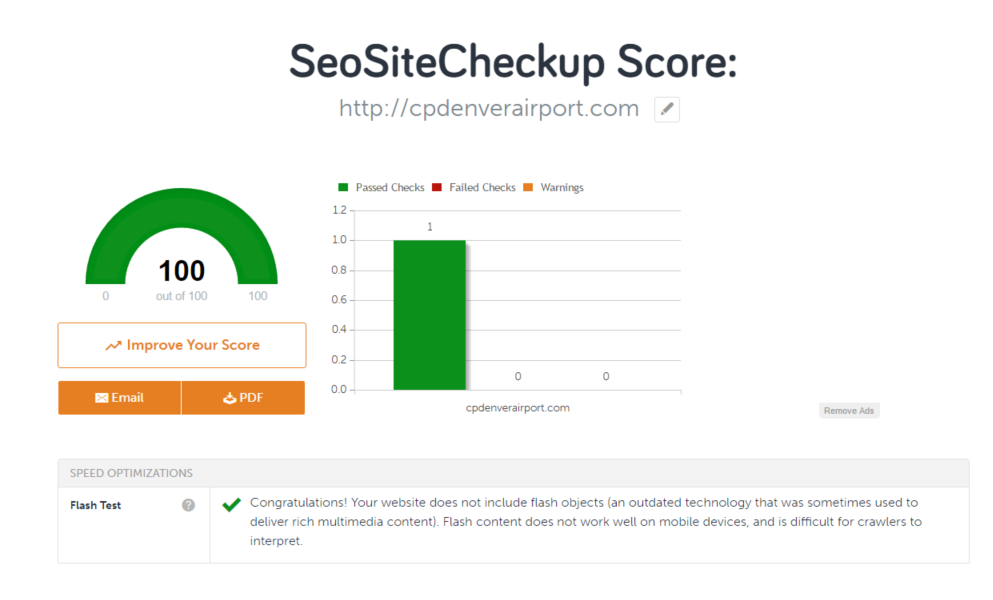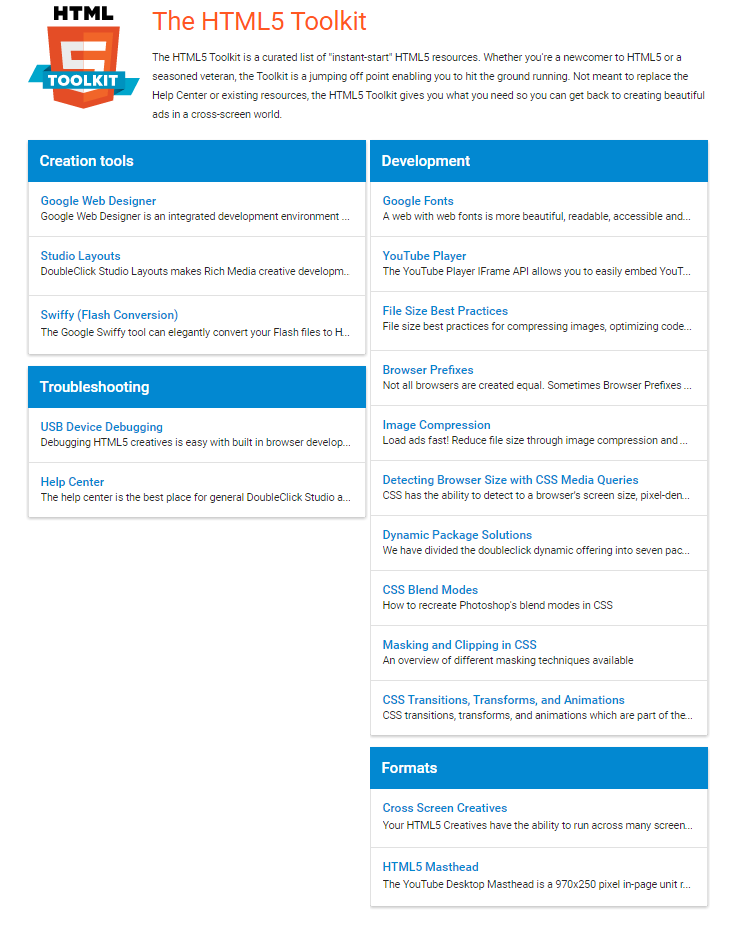You’re browsing the web, trying to watch that video everyone has been talking about. (I mean everyone!) Just when you think you found it, a giant error message pops up across your screen foiling your plans of staying current and hip. But this time it may not be your internet connection because major browsers are changing how they display videos on the web.

Looks familiar huh? We’ve all seen the above message in one form or another. Usually in the form of a pop-up, this helpful message displays, alerting you that you need to update your Flash Player in order to access the content you requested. Annoying as it is, we accept and click the convenient link to download the latest version. So imagine, in the tone of a T.V. pitchmen, when I tell you, “What if there was another way!?”. It is not fantasy because internet browsers have begun to realize these tedious updates and software bulk don’t make for a positive and efficient user experience. The software platform that previously powered a large chunk of the web’s animated content, advertisements, and browser-based games, is being phased out with the help of the major web browsers. Understanding this change is the first step in ensuring your hotel’s eMarketing efforts will be unaffected when the major changes come.
Look, we need to talk…
Step one is acknowledging there is a problem, Chrome and Mozilla Firefox have started the process of recovery by admitting to a Flash problem. The bulky plugin has caused a buffet of issues for web goers, including increased security risks, buggy UX, and update headaches. Browsers have decided to address these problems in order to provide a better experience for their users. Benjamin Smedberg writes on Mozilla’s official blog that moving away from flash “will bring Firefox users enhanced security, improved battery life, faster page load, and better browser responsiveness.”
Google Chrome has taken a similar stance against the once famed plugin, outlining a plan to phase out Flash Player with focused efforts in Q4 2016. Google plans to only serve Flash by default for the top 10 domains that still rely on the plugin. If Flash is required on any other web page, the user will be asked whether Flash can be allowed to run or not. This is not Google’s first rejection of Flash Player, back in 2015, the company announced that it would inhibit internet ads that use Flash by preventing them from autoplaying. The online retail giant Amazon has also stopped serving Flash ads as of September 1st, 2015. Apple followed suit by blocking Flash content by default on their web browser, Safari.
I think we should see other people.
Obviously by dumping Flash Player, a suitable replacement had to be found so users can still enjoy animated and rich media content. In steps HTML5, valiantly, with a solution to everyone’s problems. While the markup language, HTML, has been structuring the web since the birth of the internet, HTML5 is the evolved, older brother with all of the fancy toys. HTML5 has the power and ability to replace Flash Player by being able to perform the same tasks without the downsides and bulk that come with Flash.
Google summarized the change in the following statement, “While Flash historically has been critical for rich media on the Web, today in many cases HTML5 provides a more integrated media experience with faster load times and lower power consumption. This change reflects the maturity of HTML5 and its ability to deliver an excellent user experience.” Google’s actions have certainly backed up their statements, as they have also dropped support of flash-built ads running on the Google Adwords platform for support of HTML5. On top of that, Youtube has also be making the switch to HTML5 Video, further separating from the age of Flash.
The best way to ensure your eMarketing efforts remain effective by changing standards is to stay up to date on best practices. For example, content that is developed for sites should no longer even dream of utilizing Flash Player, instead ride the increasingly swelling wave of HTML5. Keep up on standards and stay ahead of the curve. It is one thing to say it, but how do you actually accomplish these goals? First off, perform a “Flash Test” on your site and determine if you have any elements relying on Flash. Remove these elements from your website and replace with HTML5.” While it might seem like a pain now, it will feel much worse when all support for Flash is gone.

Display ads are another critical component of an strong eMarketing strategy and are also affected by the exodus of Flash Player. Google has already hindered the ability of Flash Ads by disabling autoplay and now has plans to stop displaying all Flash ads by January 2017. HTML5 is the new standard and a good marketer has to adapt. Google offers tools to develop ads in the new supported format, including a complete HTML5 Rich Media Toolkit which also contains the cutting edge program Google Web Designer. Utilizing the tools that Google provides is a great way to ensure your ads are served on Google’s Display Network.

I’m sorry but…
If teenage pop songs have taught me anything (wait, have they?) it’s you have to move on from a breakup and get back into the dating scene. Embrace the good times you had with Flash Player but realize they were no longer a good fit. Do yourself a favor and accept that date with HTML5, they will treat you right and will provide countless years of support.
Thankfully when you’re going through a breakup there is ice cream. Good news, we can be your ice cream! Our web wizards are the perfect resource for evaluating the strength of your website. Or perhaps you want to get back into the dating game, let our experts get you back on your feet with a website complete with SEO rich content and progressive web design. Drop us a line, we’d love to play matchmaker and get you paired up with your dream site.




